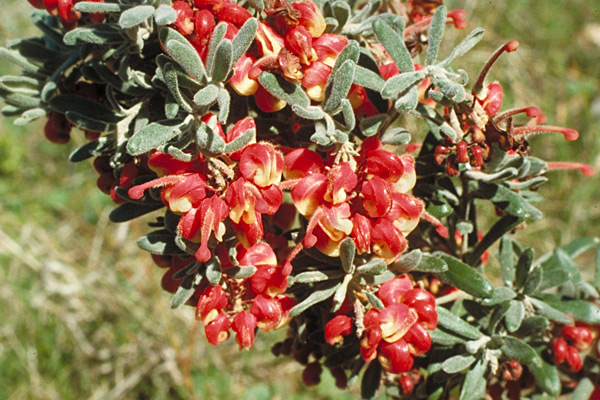General Description:
Grevillea lanigera is a very variable species due, no doubt, to the fact that is occupies a range of habitats throughout its range. The best known form in cultivation is completely prostrate with a spread of about 1.5 metres (usually called the ‘Mt Tamboretha’ form although this form apparently does not occur in that location!). Other forms tend to be shrubby from about 30 cm to about 1.5 metres high. The leaves are hairy, narrow-oblong in shape to about 25-30 mm long. The flowers occur in clusters from the ends of the branches and are mainly red or pink with tones of white or yellow. Flowering occurs mainly in winter and spring but flowers may also occur spasmodically at other times of year.
The prostrate form is popular in cultivation and has proven to be hardy in a range of climates provide the soils are well drained. It prefers sunny or semi-shaded situations and withstands extended dry periods once established. It is hardy to at least moderate frost. Other forms are not widely grown but also seem to be reliable garden plants.
The species can be grown from seed which should be “nicked” with a sharp knife prior to sowing to improve germination. Cuttings from firm, current season’s growth usually strike reliably.

Grevillea lanigera
Photo: Brian Walters
 Australian Native Plants Society (Australia)
Australian Native Plants Society (Australia)













